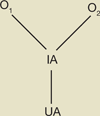B-cell-lineage immunogen design in vaccine development with HIV-1 as a case study
- PMID: 22565972
- PMCID: PMC3512202
- DOI: 10.1038/nbt.2197
B-cell-lineage immunogen design in vaccine development with HIV-1 as a case study
Abstract
Failure of immunization with the HIV-1 envelope to induce broadly neutralizing antibodies against conserved epitopes is a major barrier to producing a preventive HIV-1 vaccine. Broadly neutralizing monoclonal antibodies (BnAbs) from those subjects who do produce them after years of chronic HIV-1 infection have one or more unusual characteristics, including polyreactivity for host antigens, extensive somatic hypermutation and long, variable heavy-chain third complementarity-determining regions, factors that may limit their expression by host immunoregulatory mechanisms. The isolation of BnAbs from HIV-1-infected subjects and the use of computationally derived clonal lineages as templates provide a new path for HIV-1 vaccine immunogen design. This approach, which should be applicable to many infectious agents, holds promise for the construction of vaccines that can drive B cells along rare but desirable maturation pathways.
Figures




References
-
- Hilleman MR. Overview of the needs and realities for developing new and improved vaccines in the 21st century. Intervirology. 2002;45:199–211. - PubMed
-
- Plotkin SA. Vaccines: correlates of vaccine-induced immunity. Clin. Infect. Dis. 2008;47:401–409. - PubMed
-
- Karlsson Hedestam GB, et al. The challenges of eliciting neutralizing antibodies to HIV-1 and to influenza virus. Nat. Rev. Microbiol. 2008;6:143–155. - PubMed
Publication types
MeSH terms
Substances
Grants and funding
LinkOut - more resources
Full Text Sources
Other Literature Sources

